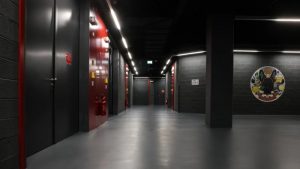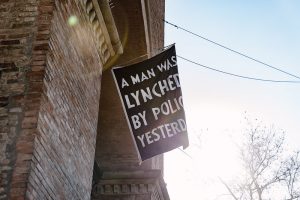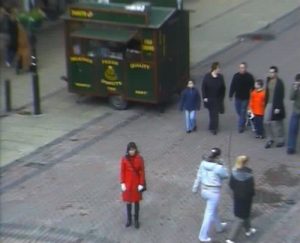theboxtank (Emily Andersen, Geoff DeOld and Corey Hoelker), a collaborative blog about big-box urbanism and retail, have devised a city in a box with discount living for 100,000 inhabitants. They call it Waltropolis.
Wal-Mart’s Supercenters offer the one-stop shopping experience. In addition to providing discount merchandise, these big-boxes include nail and hair salons, pharmacies, banks, travel agencies, gas stations, police sub-stations and a range of fast-food restaurants. One-stop shopping becomes one-stop urbanism as services found “downtown” fold into the Supercenter. Urban events of downtown have followed. Recreation vehicle Parking, weddings, armed forces recruiting, voter registration, high school marching bands, public assembly, crime converge on the Supercenter. It is privatised public space; discount style, a victory of American pragmatism.
theboxtank considers the latent possibilities of the big-box as a megastructure. In Waltropolis, the city and everything contained within it are organized in an infrastructure based on Wal-Mart’s distribution machine.
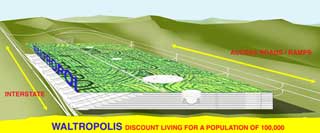
Waltropolis optimizes the distribution of goods to its population of 100,000 people. 11 km (7 miles) by 1.6 km (1 mile) and 90 m (300 feet) high, the 10 levels of Waltropolis locates the retail, civic, educational, and cultural program within the efficiency of a box. Residential tract housing is located on the roof deck, the 7 sq. miles optimized to provide the suburban-style living Americans have come to expect.
Waltropolis provides its private fleet of trucks dedicated lanes which ramp up to loading docks. Containers are unloaded directly on to conveyer belts that transfer goods to the appropriate Waltropolis level and product department.
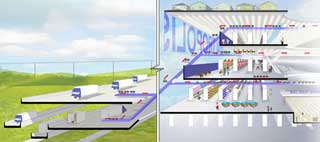
36 parking lots are distributed throughout two floor plates spaced every 600 m (2000 feet). Each family at Waltropolis can maintain their 2.5 car lifestyle.
In Waltropolis, Retail, Civic, Education and Cultural institutions fold into one, completing the privatization of public institutions and their spaces. Office space, museums, classrooms, places of worship, courthouses and jails, and libraries are loaded along a linear band that runs the 11-km (7 mile) length of Waltropolis. All of this fronts Wal-Street, a place for parades and other acts of public assembly.
This is discount space in the extreme: urban form as a product of consumerism.
Wasted exterior space – sidewalk, park, boulevard, city square – have been transformed to serve Waltropolis. Scattered throughout Waltropolis are restaurants, theatres, recreation fields and other entertainment spaces, providing brief distractions from shopping.
Via archinect.
Related: Big Box Reuses.


